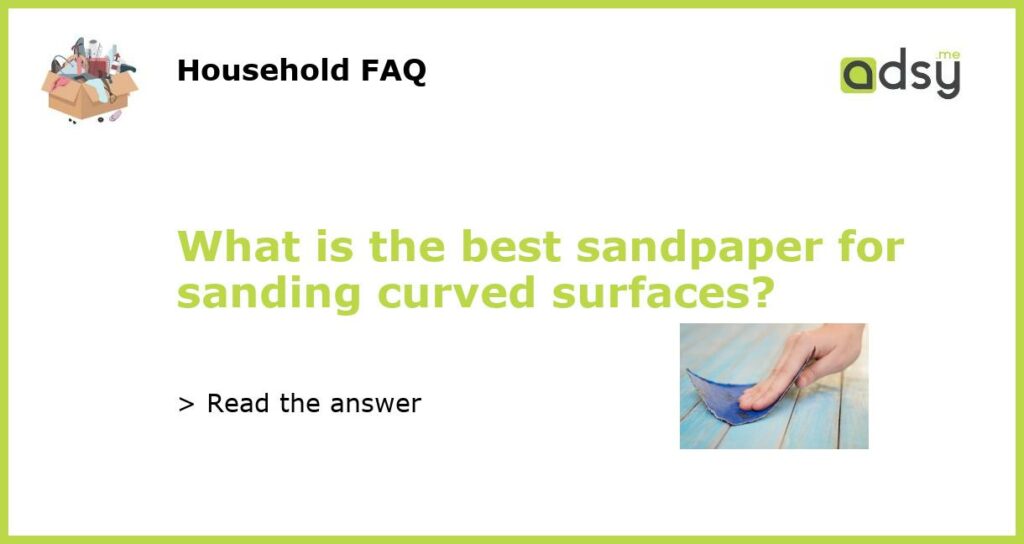The best sandpaper for sanding curved surfaces
Sanding curved surfaces can be a challenging task, as the irregular shape makes it difficult for the sandpaper to make full contact with the surface. However, with the right sandpaper, you can achieve smooth and polished results on any curved surface. In this article, we will explore the best sandpaper options for sanding curved surfaces.
Flexible sandpaper sheets
Flexible sandpaper sheets are a great option for sanding curved surfaces. These sheets are made from a thin, flexible material that can easily conform to the shape of the surface you are working on. They provide a consistent sanding surface and are ideal for working on concave or convex surfaces.
When using flexible sandpaper sheets, it is important to use a sanding block or a soft pad to help distribute pressure evenly. This will prevent the sandpaper from cutting through too quickly and ensure that you achieve a smooth and even finish.
Foam-backed sanding pads
Foam-backed sanding pads are another excellent option for sanding curved surfaces. These pads have a foam layer on the back, which provides cushioning and flexibility. The foam allows the sandpaper to conform to the shape of the surface, ensuring consistent sanding throughout the project.
When using foam-backed sanding pads, it is important to select the appropriate grit for the task at hand. Coarser grits, such as 60 or 80, are ideal for removing material quickly, while finer grits, such as 120 or 220, are better for smoothing and finishing. It is also important to regularly clean the sandpaper to remove debris and prevent clogging.
Sanding sponges
Sanding sponges are versatile tools that are perfect for sanding curved surfaces. These sponges are made from a foam material that provides flexibility and conformability. They are available in various shapes and sizes, making them ideal for reaching into tight corners and intricate details.
One advantage of sanding sponges is that they can be used wet or dry. Wet sanding can help reduce dust and prevent clogging of the sandpaper. To use a sanding sponge, simply dampen it with water and start sanding the curved surface in a circular or back-and-forth motion.
Abrasive cord
Abrasive cord, also known as abrasive rope, is a unique option for sanding curved surfaces. It is a flexible cord that is coated with abrasive particles, making it perfect for getting into tight spots and irregular shapes. Abrasive cord is available in various grits and thicknesses, allowing you to choose the right option for your project.
To use abrasive cord, simply wrap it around the curved surface and move it back and forth to remove material. The cord provides a consistent sanding surface and allows you to reach areas that may be difficult to access with other sandpaper options.
Sanding discs with foam pads
If you are sanding curved surfaces with a power sander, using sanding discs with foam pads is a great option. These discs have a foam layer attached to the back, which provides flexibility and allows the sandpaper to contour to the shape of the surface.
When using sanding discs with foam pads, it is important to keep the sander moving to avoid creating uneven spots. Start with a coarser grit and gradually move to finer grits for a smooth and polished finish. It is also important to regularly clean the sandpaper to prevent clogging and maintain optimal performance.
In conclusion, there are several options available for sanding curved surfaces. Flexible sandpaper sheets, foam-backed sanding pads, sanding sponges, abrasive cord, and sanding discs with foam pads are all excellent choices to achieve smooth and polished results. Depending on the task at hand and the shape of the surface, you can select the most suitable sandpaper option to achieve the desired finish. Remember to use the appropriate grit and techniques to ensure effective sanding and maximize the life of your sandpaper.






